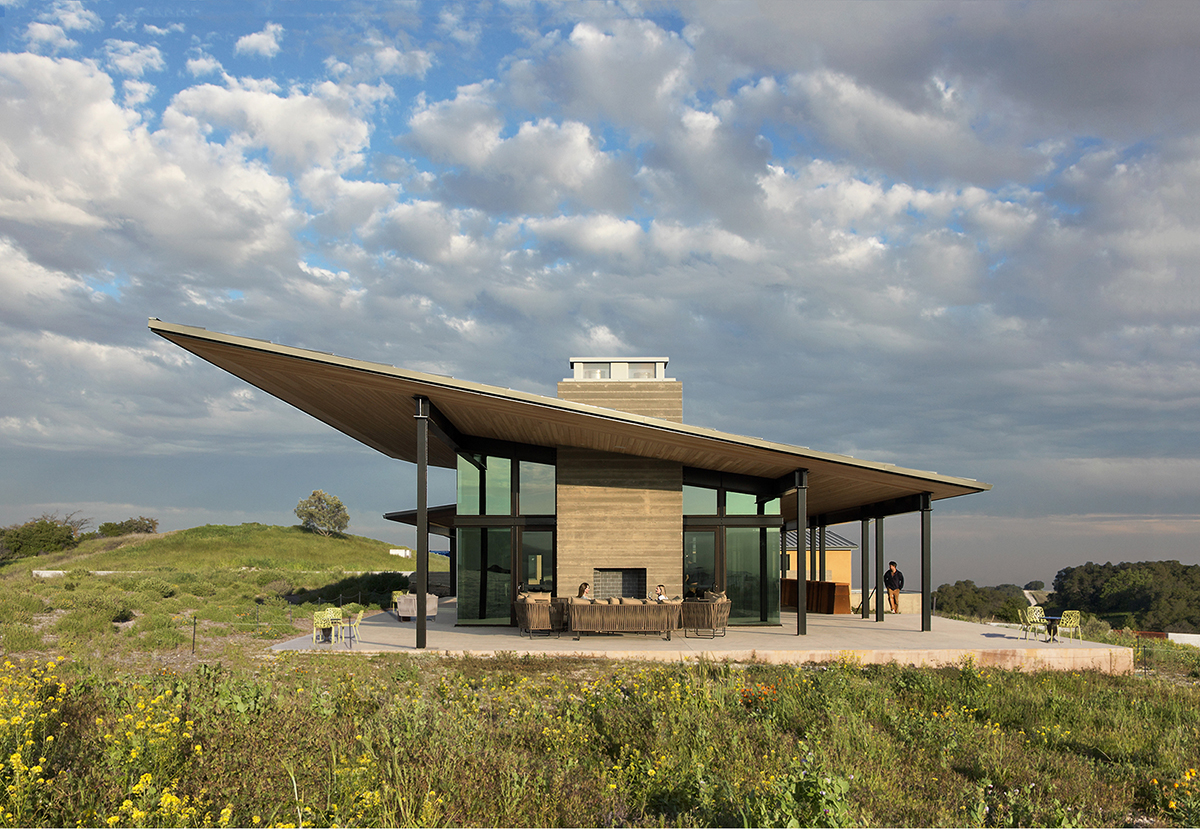What to Know and Say //byline By Mark Kelly, AIA, LEED BD+C September 17, 2024 Law Winery. Bar Architects & Interiors Why Climate Change Is Terroir. Terroir is so much more than AOP vineyard designates traced onto a map, but the intersection of site, climate, and people. The human element is vast to the edges of the infinite, encompassing tradition, savoir faire, farming choices, business choices, and even the political and economic context in which a wine region finds itself. All these variables under the “people” category inevitably circle back and impact the first two elements, vineyard, and climate. Today, with climate change and its partner, globalization, the sphere surrounding our terroir is expanding to the atmosphere of Earth itself. It is our responsibility to expand our awareness of our own radius of impact (1). When we think of winemaking, most of us conjure up bucolic images of the abundant vineyards in California or France where you can see and taste the amazing results of the land and the winemakers’ passion. Winemaking is a mix of art and science. An intensive process requiring deep awareness of the environment where the grapes are grown – the quality of the soil, water and the weather, all significantly impact the fruit’s quality. Winemakers are increasingly aware of the effects of climate change on their vines – the feedstock for their livelihood. They are experiencing in real time the devastating impacts of drought, wildfires, and intense climatic events. Realizing the need to adapt to the changing environment to survive, the wine industry is looking improving their practices to reduce their environmental impacts (2). Greater public awareness and demand for more ecologically sound practices in vineyard management and wine production along with increasing numbers of fellow winemakers adopting high levels of sustainable practices is driving greater change in the industry. Water, carbon, and energy are key resources used in the grape growing and winemaking process. For each of these resources Using less and optimizing re-use are fundamental objectives when designing a highly sustainable winery. Begin with right sizing the project – don’t build more than is needed. Re-use buildings and materials as much as possible. Reducing the quantity of materials and selecting low-carbon materials are all key strategies to achieving sustainability and low-carbon goals – especially when targeting the most carbon intensive materials – concrete, steel, aluminum and glass – to achieve the largest carbon reduction. Water Water is required at every step of the growing and winemaking process, from vineyard and landscape irrigation, to crushing and pressing, through fermentation and aging, to bottling of the finished product (3). A typical West Coast winery uses between three to 10 gallons of water per gallon of wine produced (4). Key strategies for reducing water use in a winery include: use of steam for production area cleaning and barrel washing, using nozzles on hoses and installing water meters to measure flow and identify possible leaks. Recycling and re-using 100% of process wastewater for either production use or vineyard irrigation is critical. Water is a shared resource that should be used responsibly to ensure equitable and long-term access for the whole community. A recent New York Times article (5) identifies US aquifers have been unsustainably depleted for decades. Many serve as the main source of water for local communities and are essential to protect and maintain. Carbon Carbon, though less tangible, is equally important in the conception of a highly sustainable winery design. How we think about design has a direct impact on the amount of carbon, both embodied and operational, emitted over the lifespan of a building. The time-value of carbon (6) increases the importance of lowering the embodied carbon in what is built today. Taking advantage of the relatively temperate climates where wineries are typically located, operational carbon is most effectively reduced through the use of passive design strategies. A high-performance envelope combined with passive or hybrid conditioning strategies for heating & cooling can be very effectively used in most areas of a winery. Many production areas do not need to be conditioned as wine fermentation tanks are typically jacketed for temperature control (7). Occupant comfort within process areas can be achieved with passive design strategies, primarily with the provision of night-air cooling, good shading, natural ventilation/air circulation and daylighting. One opportunity for lowering operational carbon emissions is for wineries (and breweries) to capture CO2 during the fermentation process. The concentration can become dangerously high and needs to be evacuated for employee safety. Though the amount of CO2 each winery emits annually is small, as an industry, the emissions are significant, presenting an opportunity for the wineries to act collectively to realize a larger impact (8). However, due to its high cost, carbon capture is still not adopted in most wineries, other than some trial/demonstration projects. Energy Reducing operational energy use, and the associated operational carbon within hospitality and other non-production areas can be achieved cost effectively by combining a high-performance envelope and passive conditioning/natural ventilation strategies with high-efficiency mechanical systems (e.g. high COP heat pumps) to achieve and maintain temperature and humidity targets. Controlled daylighting further enhances the quality and comfort of these areas. The above ‘mixed mode’ approach works especially well for office and guest hospitality areas. In temperate climates, designing indoor-outdoor spaces provides myriad benefits: in shoulder months with mild temperatures, the building can be opened and run with no, or minimal, conditioning while remaining comfortable. From an experiential perspective, open spaces integrated with the surrounding land provide guests and staff a closer connection with the vineyards and surrounding environment. Conclusion Being purposeful in both the design of the building and production practices to reduce carbon, water and energy use is an opportunity to significantly lower environmental impacts, lower operational costs and improve the quality of the visitor’s experience. These practices are all part of a more proactive stewardship of the land and enhancing the terroir – the intersection of site, climate and people. Article Resources: SevenFifty Daily July 12, 2021
AIA CaliforniaRead More




